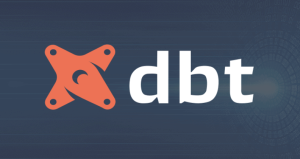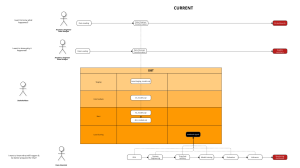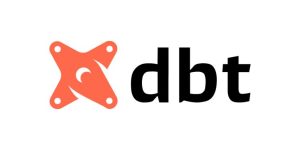Maximizing Data Value for End-Users and Developers
At Joon Solutions, our mindset has always centered on “Data as a Product”: our solutions are tools that deliver insights which businesses can precisely leverage in their strategy. It’s not only about the data, but also the process and expertise required to derive acitonable outcomes. After all, data only becomes valuable when it’s understood and utilized by end users.
A tool that has been instrumental in our journey, particularly in delivering data products to their intended recipients, is Looker. If you’re grappling with bottlenecks and considering implementing a Data Mesh structure within your team, I wholeheartedly recommend Looker. It’s rare to find a platform that offers end users such a wealth of options while maintaining ease of use for both engineers and non-technical users.
Looker is end-user friendly
As analysts, we often overlook the complexities that can arise when dealing with traditional BI tools.
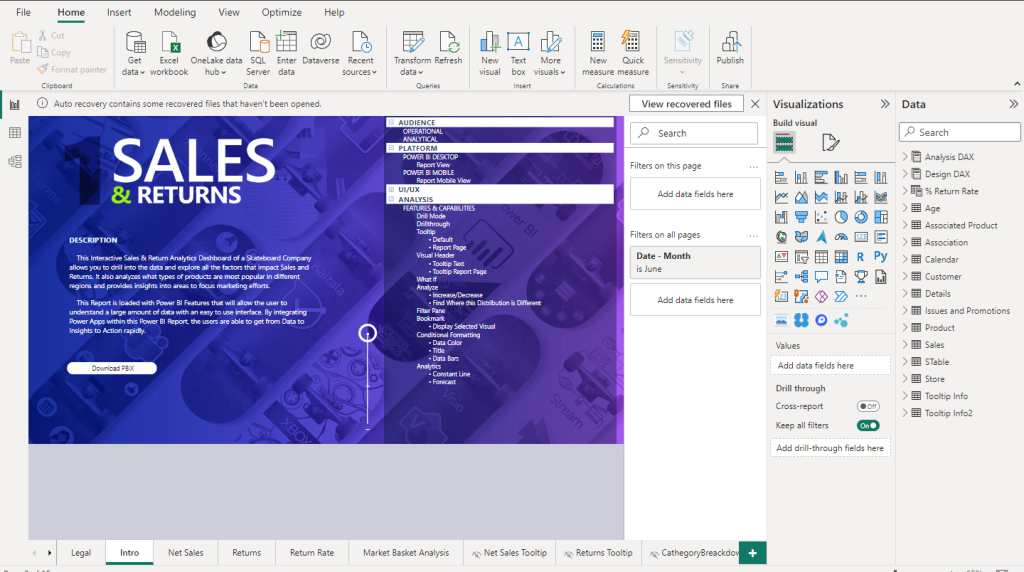
Is PowerBI impressive? Certainly. It played a pivotal role in landing my first data job. Is it powerful? Absolutely, there are plenty that you could do with PowerQuery and DAX.
Is the screen inundated with options, potentially overwhelming those who haven’t spent weeks familiarizing themselves with it? Indeed.
The same holds true for Tableau. Exceptional functionality? Check. A plethora of options? Check. Complexity? Definitely.
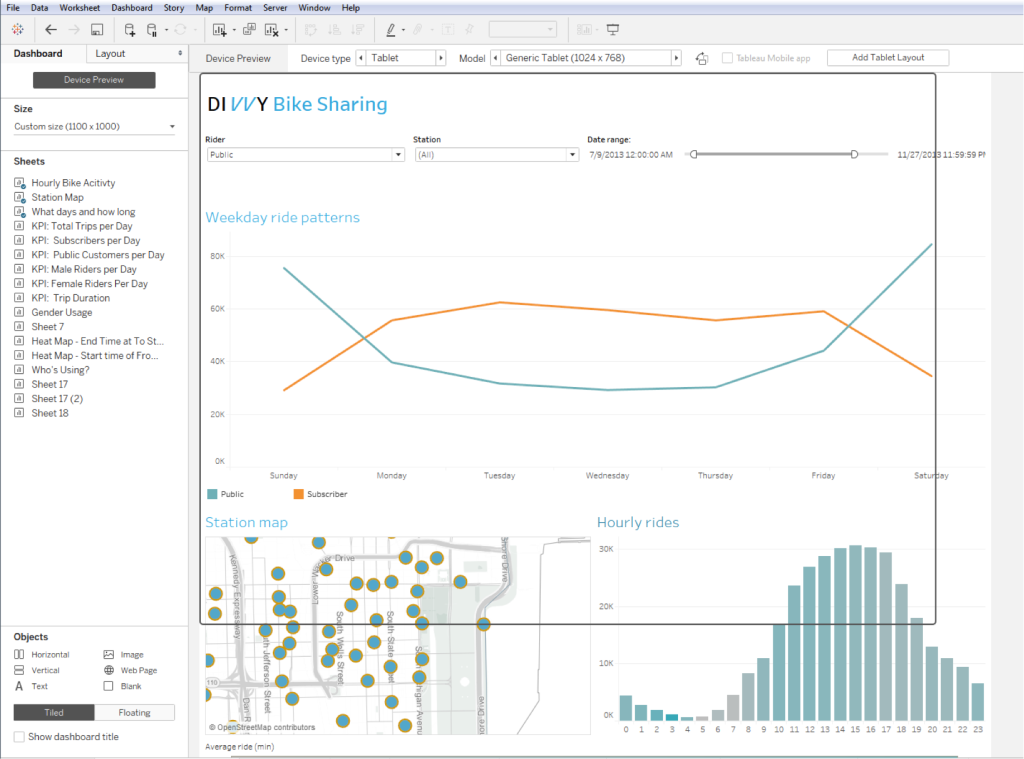
For the average analyst, these complexities are surmountable. Even an intern can become proficient within a few weeks given proper training and resources, and there’s no shortage of learning materials available for PowerBI and Tableau.
However, can a data end-user, without prior training, effectively create a simple dashboard based on the models built in PowerBI or Tableau? Can they intuitively arrange a couple of data rows to create a basic chart and apply a filter? Can they swiftly verify an ad-hoc statistic to confirm a hunch about a new product? Can they independently explore the dataset for a comprehensive view? Can they achieve all of this within a single day? Or even an hour?
The odds are slim.
In most cases, end users’ interactions with PowerBI or Tableau are limited to interactions at the dashboard level. They can manipulate pre-built elements, apply filters, and grasp the visualizations’ essence, but they lack the autonomy to delve deeper.
This is where Looker truly shines. Looker Explore grants end users the ability to swiftly and securely access data marts within the organization.
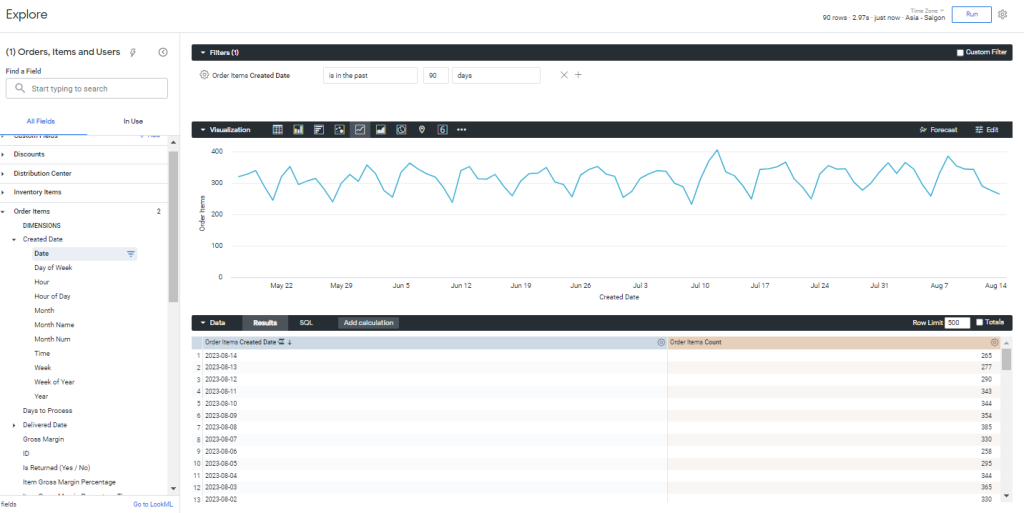
Looker Explore’s brilliance lies in its simplicity. It eschews overwhelming users with an excess of options and instead focuses on the essentials—barely ten options to be precise.
Choose your desired data, click “run,” and watch the chart materialize. Unsure about the significance of a column? A simple click on the description button provides clarity. Need to implement a filter? Click on the funnel icon. Define your filtration criteria, execute the query, and watch the magic unfold.
Becoming acquainted with Looker Explore requires minimal time investment. In just an hour, business users can grasp the foundational basics, empowering them to manipulate datasets. Their domain expertise is no longer hindered by a lack of data skills, eliminating the need for 30-minute meetings between analysts and end users for tasks that take mere minutes.
End users gain the ability to navigate through extensive datasets, breaking free from the limitations of traditional dashboards. This deeper engagement provides them with a more profound understanding of the company’s data and the data department’s efforts.
Simultaneously, they can grasp the direct value offered by the data team. Additionally, end users execute queries within an optimized dataset, dispelling concerns about unforeseen expenses or inadvertent technical debt arising from end-user actions.
To sum it up, Looker empowers end users to directly engage with data, execute ad-hoc queries, and even construct straightforward dashboards, all while ensuring that their queries adhere to established standards and qualifications.
Streamlining Development with Looker
Navigating LookML with Ease
While Looker Explore streamlines the end user’s experience, the data analyst and LookML developer team must tackle the more intricate aspects—understanding and constructing robust LookML models. Much of Looker’s advanced functionality is concealed behind this initial barrier. It’s no minor challenge. Mastering this domain requires learning a new language, grappling with git, and implementing best practices to construct solid models, in addition to comprehending a host of functions and marketplace packages.
Nonetheless, overcoming this barrier yields substantial rewards. LookML boasts exceptional readability.
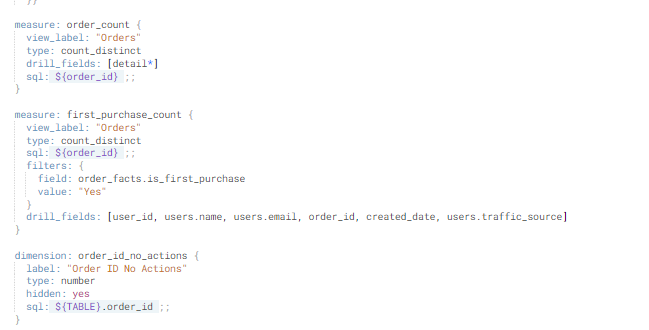
If you’re proficient in English, deciphering a view file’s essence becomes second nature. Familiarity with SQL further bridges the comprehension gap. While grasping every field’s function might take time, you can readily grasp the roles of dimensions and measures. You understand their origins, calculations, and interactions leading to the final outcome.
Leveraging Looker’s advanced functions might necessitate time due to the wealth of features to explore. However, crafting your first exploration and initiating the delivery of core values requires only a day or two. Integrate your dataset as views, interconnect them in the model page, and you’re primed to present results to end users.
Looker brings software development best practices to the BI layer
A Dynamic Development Environment
This is where Looker truly shines: the Development Environment. Ordinarily, testing changes to an existing dataset’s impact on the BI Layer can be complex. With other tools, configuring connections to test datasets, cross-referencing numbers against live versions, and toggling back to the production connection is a requirement. It’s not excessively time-consuming, but it requires additional effort.
This means that occasionally, these steps are skipped, potentially leading to pitfalls. And these pitfalls can have dire consequences—consider the CEO discovering their favorite dashboard malfunctioning or the CFO presenting erroneous figures to investors due to an overlooked filter.
Looker revolutionizes this process. By embedding specific directives within the view file, you can seamlessly switch between development and production environments with a single button click. Consequently, data is dynamically queried, offering real-time insights.

Modifications to LookML models are confined to the development realm. Moreover, dashboards within development operate independently of the production environment. This unique approach ensures that changes can only be made in development, allowing you to assess their impact prior to any end-user interaction. This integrated testing mechanism prevents issues from surfacing in the production setting.
A Fail-Safe Workflow
It’s substantially more challenging to mishandle LookML code compared to other data manipulation languages. LookML validation is
an integral part of the workflow before committing changes. Even after validation, changes must undergo peer review before they can be deployed in production. Paired with dedicated testing in the development environment, the likelihood of disruptive changes reaching production is minimal. And should such changes occur, they can be promptly rectified via git.
For an added layer of assurance, consider Spectacles. This CI/CD workflow detects any dashboard disruptions prior to merging changes.
Maximizing Code Reusability
Any code crafted in LookML can be extended and repurposed elsewhere. Views can be extended within models, and pre-developed packages are available in the Marketplace. Instead of constructing intricate solutions from scratch, existing repositories likely address your needs. The Looker Marketplace offers a plethora of solutions—simply adapt them to your variables, implement, and let them run.
This approach greatly benefits junior LookML developers. Seniors can tackle the intricate aspects while juniors extend existing views and integrate the necessary details. This not only eases the senior developer’s workload but also accelerates juniors’ comprehension.
Conclusion
Overall, Looker just brings a great workflow and a sense of control/ stability unmatched by other BI platforms that I have experienced, with the combination of:
- Development Environment
- Git Version control and CI/CD
- LookML readability and reusability
- Marketplace packages
I can honestly say they’re worth their price tags – especially for large teams with a high volume of data requests. While other existing options can deliver what Looker delivers, few do it with the ease and comfort Looker brings to the table – after you get through the initial learning curve.
Looker might require the organization to reach certain scales to truly be worth it, but for every project we picked Looker, we can confidently say that both our engineers and our clients are happy with the decision.
- Looker: Delivering Your Data As A Product - August 27, 2023
- VPN vs SSH tunnel and why do companies use them? - December 25, 2022
- How to make basic API requests with Postman - June 8, 2022

